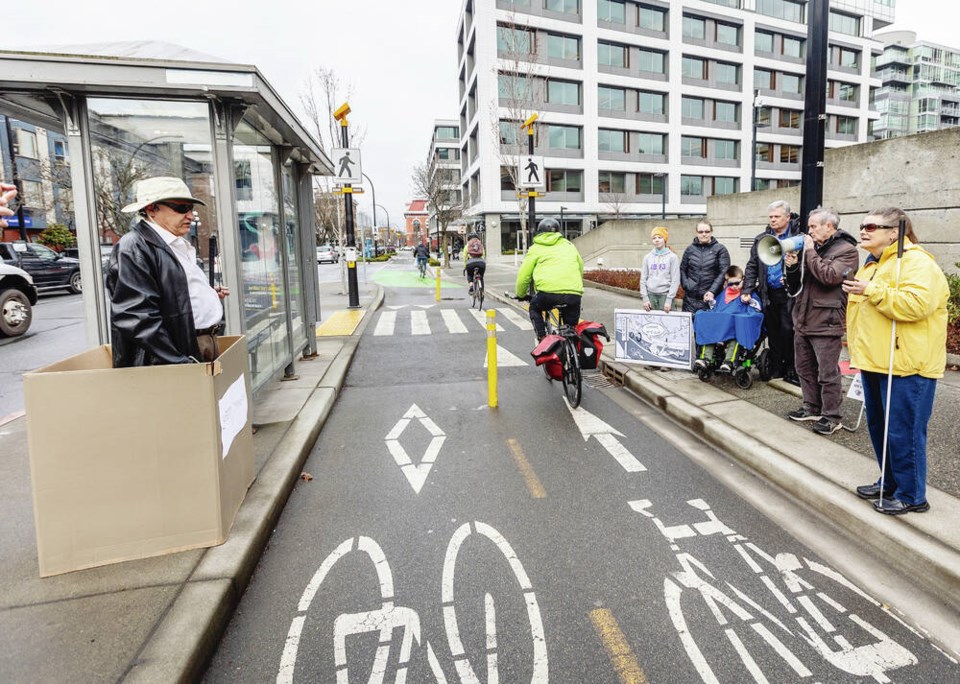Provincial design guidelines for “floating” bus stops that were revised in response to a human rights tribunal ruling in Victoria continue to fail to accommodate blind people, say those who initiated the human rights case.
A small group staged a mock trial Monday of B.C.’s public safety minister to draw attention to their ongoing safety concerns about bus stops along Pandora Avenue that require transit riders to cross two-way bike lanes to reach a bus stop.
Oriano Belusic, vice-president of the Canadian Federation of the Blind, stood in a cardboard box labelled “Safety Minister” next to a bus stop on Pandora near Blanshard Street, while Graeme McCreath, former treasurer of the advocacy group, stood on the sidewalk, the two separated by the bike lanes, which have curbs on each side.
“How do you think a blind person can detect a speeding cyclist?” McCreath asked, as people rode in the lanes between the two men.
“Just with some careful listening,” Belusic, playing the role of public safety minister, yelled back, his voice competing with the sound of traffic on Pandora.
“Speak up!” supporters said, as some of Belusic’s responses were drowned out by passing cars.
In November 2020, B.C. Human Rights Tribunal member Norman Trerise ruled the design discriminates against people who are blind or visually impaired because they can’t know when it’s safe to cross. However, Trerise wrote in his decision that the city’s addition of pedestrian-activated flashing lights that make an audible signal when activated is a reasonable accommodation.
In response to the ruling, the province updated its design guidance on floating bus stops to recommend the inclusion of flashing beacons and an acoustic message at the crosswalk between the sidewalk and the floating bus stop.
Belusic and McCreath said the changes don’t help. The audible signal at bus stops along Pandora Avenue warns pedestrians to cross with caution. “Vehicles may not stop,” the message says.
“You can’t cross with caution if you don’t know where the bikes are,” McCreath said.
At crosswalks involving motor vehicles, McCreath said he can hear when traffic stops, but bikes are so quiet, he can’t tell when it’s safe to cross to a floating bus stop.
Belusic said public transit is important for many people who are blind, because they can’t drive, but he avoids using floating bus stops, because “it’s a gamble.”
“There’s no way of knowing when there is a cyclist and when there isn’t one coming,” he said.
City of Victoria spokesman Sheldon Johnson said in a statement the design of the floating bus stops is consistent with infrastructure in cities in the region, in Canada and internationally.
The city is committed to ensuring safety and reducing barriers in the built environment, he said.
Johnson noted the complaint that initiated the human rights tribunal case has been withdrawn.
regan-elliott@timescolonist.com
>>> To comment on this article, write a letter to the editor: letters@timescolonist.com



